Tianshu Yu
UM3: Unsupervised Map to Map Matching
Aug 23, 2025Abstract:Map-to-map matching is a critical task for aligning spatial data across heterogeneous sources, yet it remains challenging due to the lack of ground truth correspondences, sparse node features, and scalability demands. In this paper, we propose an unsupervised graph-based framework that addresses these challenges through three key innovations. First, our method is an unsupervised learning approach that requires no training data, which is crucial for large-scale map data where obtaining labeled training samples is challenging. Second, we introduce pseudo coordinates that capture the relative spatial layout of nodes within each map, which enhances feature discriminability and enables scale-invariant learning. Third, we design an mechanism to adaptively balance feature and geometric similarity, as well as a geometric-consistent loss function, ensuring robustness to noisy or incomplete coordinate data. At the implementation level, to handle large-scale maps, we develop a tile-based post-processing pipeline with overlapping regions and majority voting, which enables parallel processing while preserving boundary coherence. Experiments on real-world datasets demonstrate that our method achieves state-of-the-art accuracy in matching tasks, surpassing existing methods by a large margin, particularly in high-noise and large-scale scenarios. Our framework provides a scalable and practical solution for map alignment, offering a robust and efficient alternative to traditional approaches.
GLM-4.5: Agentic, Reasoning, and Coding (ARC) Foundation Models
Aug 08, 2025Abstract:We present GLM-4.5, an open-source Mixture-of-Experts (MoE) large language model with 355B total parameters and 32B activated parameters, featuring a hybrid reasoning method that supports both thinking and direct response modes. Through multi-stage training on 23T tokens and comprehensive post-training with expert model iteration and reinforcement learning, GLM-4.5 achieves strong performance across agentic, reasoning, and coding (ARC) tasks, scoring 70.1% on TAU-Bench, 91.0% on AIME 24, and 64.2% on SWE-bench Verified. With much fewer parameters than several competitors, GLM-4.5 ranks 3rd overall among all evaluated models and 2nd on agentic benchmarks. We release both GLM-4.5 (355B parameters) and a compact version, GLM-4.5-Air (106B parameters), to advance research in reasoning and agentic AI systems. Code, models, and more information are available at https://github.com/zai-org/GLM-4.5.
EVA-MILP: Towards Standardized Evaluation of MILP Instance Generation
May 30, 2025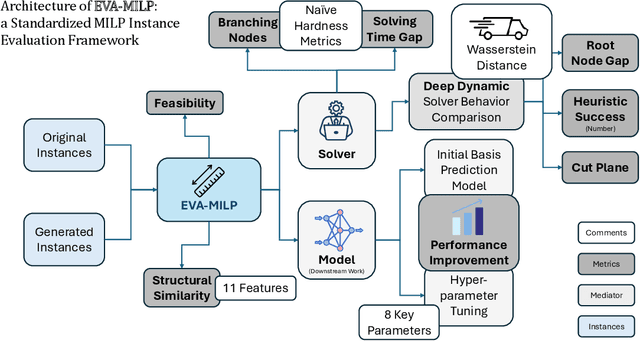
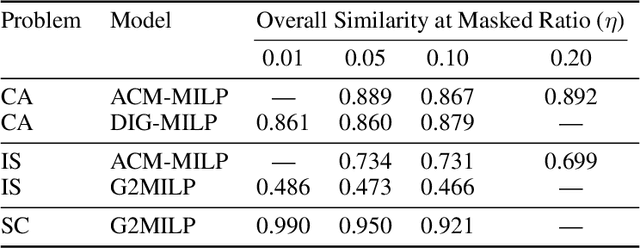
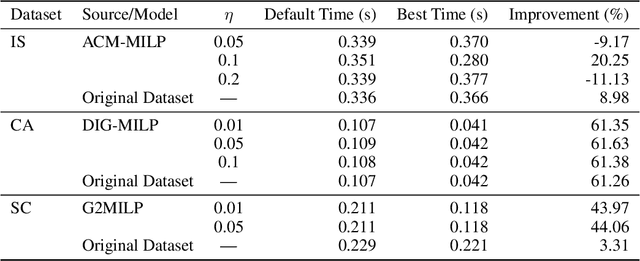
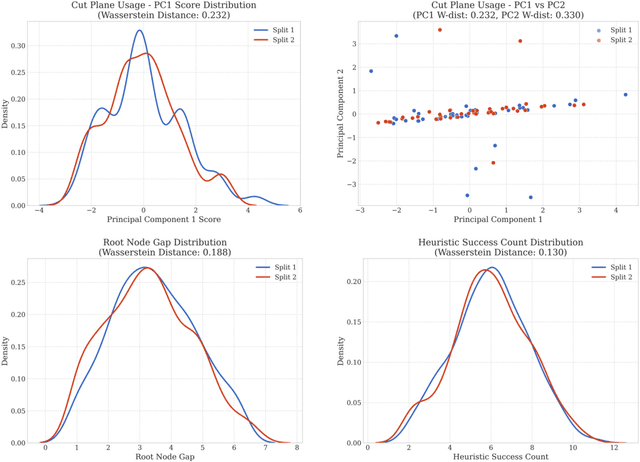
Abstract:Mixed-Integer Linear Programming (MILP) is fundamental to solving complex decision-making problems. The proliferation of MILP instance generation methods, driven by machine learning's demand for diverse optimization datasets and the limitations of static benchmarks, has significantly outpaced standardized evaluation techniques. Consequently, assessing the fidelity and utility of synthetic MILP instances remains a critical, multifaceted challenge. This paper introduces a comprehensive benchmark framework designed for the systematic and objective evaluation of MILP instance generation methods. Our framework provides a unified and extensible methodology, assessing instance quality across crucial dimensions: mathematical validity, structural similarity, computational hardness, and utility in downstream machine learning tasks. A key innovation is its in-depth analysis of solver-internal features -- particularly by comparing distributions of key solver outputs including root node gap, heuristic success rates, and cut plane usage -- leveraging the solver's dynamic solution behavior as an `expert assessment' to reveal nuanced computational resemblances. By offering a structured approach with clearly defined solver-independent and solver-dependent metrics, our benchmark aims to facilitate robust comparisons among diverse generation techniques, spur the development of higher-quality instance generators, and ultimately enhance the reliability of research reliant on synthetic MILP data. The framework's effectiveness in systematically comparing the fidelity of instance sets is demonstrated using contemporary generative models.
Importance Weighted Score Matching for Diffusion Samplers with Enhanced Mode Coverage
May 26, 2025Abstract:Training neural samplers directly from unnormalized densities without access to target distribution samples presents a significant challenge. A critical desideratum in these settings is achieving comprehensive mode coverage, ensuring the sampler captures the full diversity of the target distribution. However, prevailing methods often circumvent the lack of target data by optimizing reverse KL-based objectives. Such objectives inherently exhibit mode-seeking behavior, potentially leading to incomplete representation of the underlying distribution. While alternative approaches strive for better mode coverage, they typically rely on implicit mechanisms like heuristics or iterative refinement. In this work, we propose a principled approach for training diffusion-based samplers by directly targeting an objective analogous to the forward KL divergence, which is conceptually known to encourage mode coverage. We introduce \textit{Importance Weighted Score Matching}, a method that optimizes this desired mode-covering objective by re-weighting the score matching loss using tractable importance sampling estimates, thereby overcoming the absence of target distribution data. We also provide theoretical analysis of the bias and variance for our proposed Monte Carlo estimator and the practical loss function used in our method. Experiments on increasingly complex multi-modal distributions, including 2D Gaussian Mixture Models with up to 120 modes and challenging particle systems with inherent symmetries -- demonstrate that our approach consistently outperforms existing neural samplers across all distributional distance metrics, achieving state-of-the-art results on all benchmarks.
Neural Graduated Assignment for Maximum Common Edge Subgraphs
May 18, 2025Abstract:The Maximum Common Edge Subgraph (MCES) problem is a crucial challenge with significant implications in domains such as biology and chemistry. Traditional approaches, which include transformations into max-clique and search-based algorithms, suffer from scalability issues when dealing with larger instances. This paper introduces ``Neural Graduated Assignment'' (NGA), a simple, scalable, unsupervised-training-based method that addresses these limitations by drawing inspiration from the classical Graduated Assignment (GA) technique. Central to NGA is stacking of neural components that closely resemble the GA process, but with the reparameterization of learnable temperature into higher dimension. We further theoretically analyze the learning dynamics of NGA, showing its design leads to fast convergence, better exploration-exploitation tradeoff, and ability to escape local optima. Extensive experiments across MCES computation, graph similarity estimation, and graph retrieval tasks reveal that NGA not only significantly improves computation time and scalability on large instances but also enhances performance compared to existing methodologies. The introduction of NGA marks a significant advancement in the computation of MCES and offers insights into other assignment problems.
Secrets of GFlowNets' Learning Behavior: A Theoretical Study
May 04, 2025Abstract:Generative Flow Networks (GFlowNets) have emerged as a powerful paradigm for generating composite structures, demonstrating considerable promise across diverse applications. While substantial progress has been made in exploring their modeling validity and connections to other generative frameworks, the theoretical understanding of their learning behavior remains largely uncharted. In this work, we present a rigorous theoretical investigation of GFlowNets' learning behavior, focusing on four fundamental dimensions: convergence, sample complexity, implicit regularization, and robustness. By analyzing these aspects, we seek to elucidate the intricate mechanisms underlying GFlowNet's learning dynamics, shedding light on its strengths and limitations. Our findings contribute to a deeper understanding of the factors influencing GFlowNet performance and provide insights into principled guidelines for their effective design and deployment. This study not only bridges a critical gap in the theoretical landscape of GFlowNets but also lays the foundation for their evolution as a reliable and interpretable framework for generative modeling. Through this, we aspire to advance the theoretical frontiers of GFlowNets and catalyze their broader adoption in the AI community.
GraphOmni: A Comprehensive and Extendable Benchmark Framework for Large Language Models on Graph-theoretic Tasks
Apr 17, 2025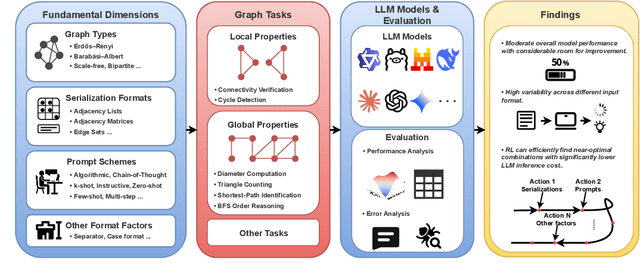

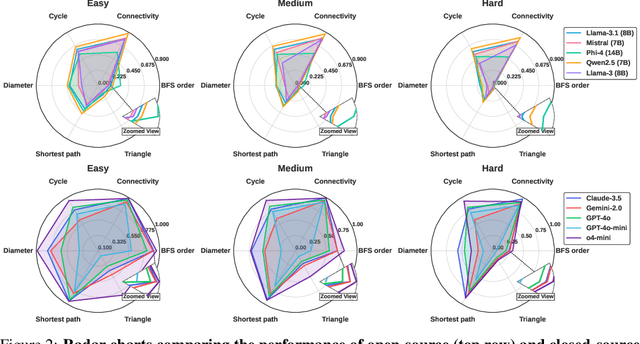
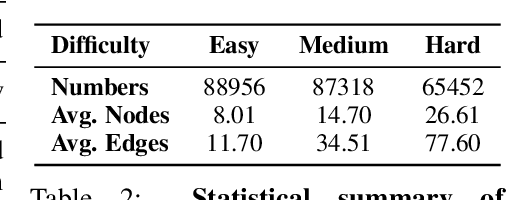
Abstract:In this paper, we presented GraphOmni, a comprehensive benchmark framework for systematically evaluating the graph reasoning capabilities of LLMs. By analyzing critical dimensions, including graph types, serialization formats, and prompt schemes, we provided extensive insights into the strengths and limitations of current LLMs. Our empirical findings emphasize that no single serialization or prompting strategy consistently outperforms others. Motivated by these insights, we propose a reinforcement learning-based approach that dynamically selects the best serialization-prompt pairings, resulting in significant accuracy improvements. GraphOmni's modular and extensible design establishes a robust foundation for future research, facilitating advancements toward general-purpose graph reasoning models.
FullTransNet: Full Transformer with Local-Global Attention for Video Summarization
Jan 01, 2025Abstract:Video summarization mainly aims to produce a compact, short, informative, and representative synopsis of raw videos, which is of great importance for browsing, analyzing, and understanding video content. Dominant video summarization approaches are generally based on recurrent or convolutional neural networks, even recent encoder-only transformers. We propose using full transformer as an alternative architecture to perform video summarization. The full transformer with an encoder-decoder structure, specifically designed for handling sequence transduction problems, is naturally suitable for video summarization tasks. This work considers supervised video summarization and casts it as a sequence-to-sequence learning problem. Our key idea is to directly apply the full transformer to the video summarization task, which is intuitively sound and effective. Also, considering the efficiency problem, we replace full attention with the combination of local and global sparse attention, which enables modeling long-range dependencies while reducing computational costs. Based on this, we propose a transformer-like architecture, named FullTransNet, which has a full encoder-decoder structure with local-global sparse attention for video summarization. Specifically, both the encoder and decoder in FullTransNet are stacked the same way as ones in the vanilla transformer, and the local-global sparse attention is used only at the encoder side. Extensive experiments on two public multimedia benchmark datasets SumMe and TVSum demonstrate that our proposed model can outperform other video summarization approaches, achieving F-Measures of 54.4% on SumMe and 63.9% on TVSum with relatively lower compute and memory requirements, verifying its effectiveness and efficiency. The code and models are publicly available on GitHub.
NeuroLifting: Neural Inference on Markov Random Fields at Scale
Nov 28, 2024


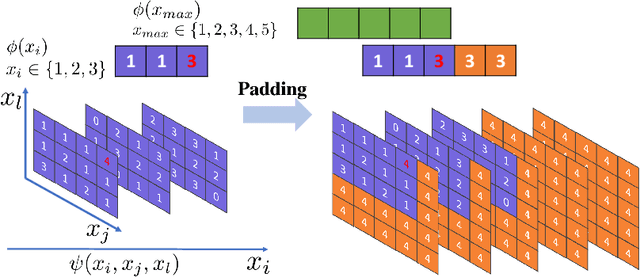
Abstract:Inference in large-scale Markov Random Fields (MRFs) is a critical yet challenging task, traditionally approached through approximate methods like belief propagation and mean field, or exact methods such as the Toulbar2 solver. These strategies often fail to strike an optimal balance between efficiency and solution quality, particularly as the problem scale increases. This paper introduces NeuroLifting, a novel technique that leverages Graph Neural Networks (GNNs) to reparameterize decision variables in MRFs, facilitating the use of standard gradient descent optimization. By extending traditional lifting techniques into a non-parametric neural network framework, NeuroLifting benefits from the smooth loss landscape of neural networks, enabling efficient and parallelizable optimization. Empirical results demonstrate that, on moderate scales, NeuroLifting performs very close to the exact solver Toulbar2 in terms of solution quality, significantly surpassing existing approximate methods. Notably, on large-scale MRFs, NeuroLifting delivers superior solution quality against all baselines, as well as exhibiting linear computational complexity growth. This work presents a significant advancement in MRF inference, offering a scalable and effective solution for large-scale problems.
Rethinking the "Heatmap + Monte Carlo Tree Search" Paradigm for Solving Large Scale TSP
Nov 14, 2024
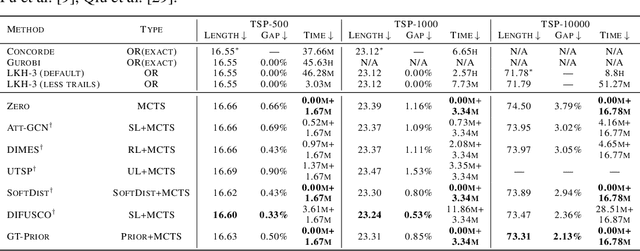
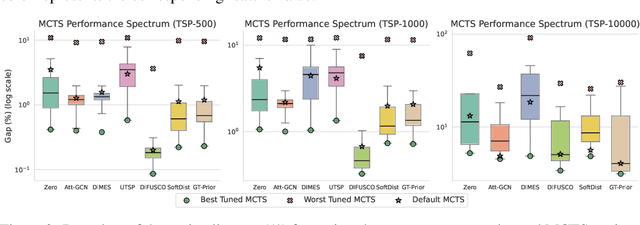
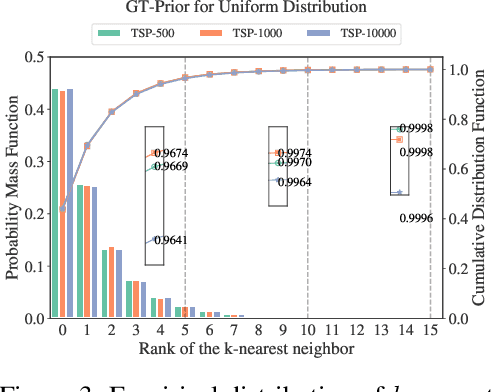
Abstract:The Travelling Salesman Problem (TSP) remains a fundamental challenge in combinatorial optimization, inspiring diverse algorithmic strategies. This paper revisits the "heatmap + Monte Carlo Tree Search (MCTS)" paradigm that has recently gained traction for learning-based TSP solutions. Within this framework, heatmaps encode the likelihood of edges forming part of the optimal tour, and MCTS refines this probabilistic guidance to discover optimal solutions. Contemporary approaches have predominantly emphasized the refinement of heatmap generation through sophisticated learning models, inadvertently sidelining the critical role of MCTS. Our extensive empirical analysis reveals two pivotal insights: 1) The configuration of MCTS strategies profoundly influences the solution quality, demanding meticulous tuning to leverage their full potential; 2) Our findings demonstrate that a rudimentary and parameter-free heatmap, derived from the intrinsic $k$-nearest nature of TSP, can rival or even surpass the performance of complicated heatmaps, with strong generalizability across various scales. Empirical evaluations across various TSP scales underscore the efficacy of our approach, achieving competitive results. These observations challenge the prevailing focus on heatmap sophistication, advocating a reevaluation of the paradigm to harness both components synergistically. Our code is available at: https://github.com/LOGO-CUHKSZ/rethink_mcts_tsp.
 Add to Chrome
Add to Chrome Add to Firefox
Add to Firefox Add to Edge
Add to Edge